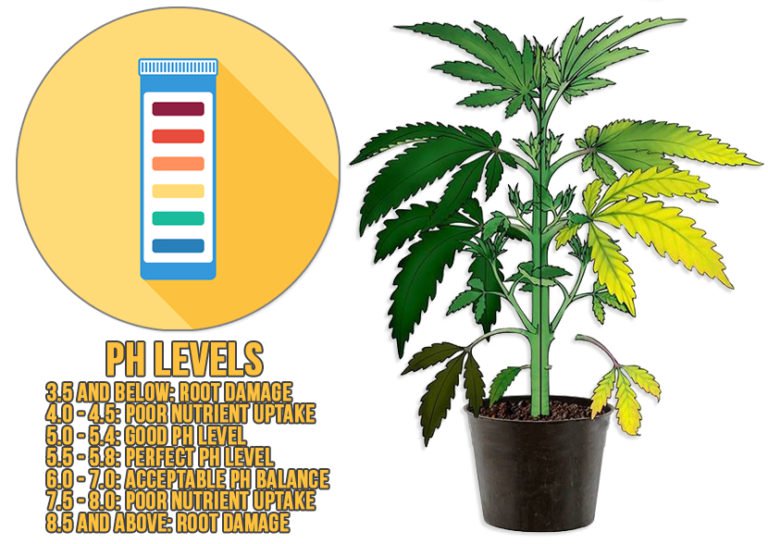- Your cart is empty
- Continue Shopping
Importance of PPM Levels with Cannabis Cultivation
Importance of PPM Levels with Cannabis Cultivation
PPM (Parts Per Million) refers to the concentration of the particulates in your feeding solution.
From minerals found in tap water to natural elements found in your nutrients, your job is to make sure that the PPM levels in your watering solution are on point so you’re not under- or over-feeding your plants. While it’s an easy concept to understand on the surface, it’s a little more complicated when you have to adjust nutrient elements inside your grow room or grow tent.
Now, pH plays a huge factor in PPM levels because even though you may have the correct PPM reading, some of the particles- and the concentration of those particles- can be harmful to your plants.
For example, let’s say your plants need to be at a PPM level of 700. You mix your solution and you get a PPM reading of 700 but your pH is around 4.5. That means that the majority of the available food for your plants is likely to have lots of heavy metals in it, which will quickly toxify the plant. You’ll need to adjust the pH level of your solution to make sure you’re not toxifying your plants.
“But won’t that throw my PPM levels off because you’re adding particles to your feeding solution?” It can, and that’s what’s so tricky about PPM and pH levels: When you adjust one you usually have to adjust the other, which can be simple or a huge pain depending on the water and nutrients you’re feeding your plants.
Common PPM Readings
These readings reflect the PPM your water should have at a given stage of growth
- Seedlings: 100-250 (nutrients aren’t needed here, hence there’s not a lot of particles needed)
- First Half of Vegging Cycle: 300-400 (this is usually after you transplant, which still doesn’t require many nutrients)
- Second Half of Vegging: 450-700 (you’ll start giving your plants more nutrients at this stage)
- First Half of Flowering: 750-950 (your plants will be eating more as they grow, so they’ll be taking in more nutrients)
- Second Half of Flowering: 1000-1600 (this is when your plant’s eating the most, especially if you give it additives)
- End of Flower, Entering Harvest: As close to 0 as possible (this is when you’ll be flushing your plants, so you don’t want there to be a lot of particles leftover)
Adjusting pH Levels
When it comes to feeding plants there are two ways of looking at it: homemade or store-bought.
Same goes with balancing your pH: you can either purchase a pH buffer from a store or you can use ingredients you can find around your home or in the grocery store– but both come with their advantages and disadvantages.
Homemade pH Buffers
- Advantage: If pH levels are high you can use a little citric acid or even white vinegar to help bring your water’s pH down. When your pH levels are low you can use a little bit of baking soda in your solution and bring those readings back up. This will cost you less than picking up a buffering solution.
- Disadvantage: The issue with using these solutions is that they don’t work for very long. You’ll find yourself having to add a little lemon juice every other day, then having to use a little baking soda to even things out. Moreover, we’ve also heard of growers using these ingredients and seeing severe spikes in pH, which if not handled properly and quickly and bring plant growth to a halt.
Premade pH Buffers
- Advantage: Most hydroponic companies out there will have pH buffers, usually called pH Up & pH Down. They’re much easier to use than citric acid or white vinegar mixes. They’re designed to raise and lower the pH of your water while keeping your water’s pH levels balanced for longer than it would be without them.
- Disadvantage: As we’ve always mentioned, easier usually means more expensive. These solutions usually won’t cost you an arm and a leg, but they’re something you can’t simply make at home and will cost some money.
Be sure to check your pH levels because no matter how much you train your plants- like FIM’ing or using the Sea of Green method if your pH levels are left unchecked they will bring plant growth to a halt!
Adjusting PPM Levels
Before you start adjusting your PPM levels, you’ll first want to make sure your tap water is ready to feed your plants. That means you’ll want to adjust the PPM of your base water before you start feeding it to your plants.
Now, any time you add anything into your watering solution, you’ll be adding more particles into it, so keep an eye out on your PPM levels at all times.
- To rid your water of too many particles you can use things like a carbon filter or a reverse osmosis machine to clean your water. However, many growers agree that most tap water has helpful minerals (like calcium and magnesium) that help plants.
- During and after the vegging stage, your plants will want more out of their feedings so filtering isn’t really necessary. That’s why we recommend only using filters at the beginning of the plant’s life when low PPM readings are needed
- For a quick fix when PPM’s are high just add a bit of fresh water with a good pH level and watch them drop. Filtered, pH’ed water is great when things get a little too much in your reservoirs.
- When readings are low it’s usually time to feed your plants. When you add nutrients to your feeding solution your PPM’s will go back up, and when your PPM’s and pH’s are in balance your plants are going to be happy and healthy.
- Just remember that these readings need constant adjustment, so if you haven’t been keeping a close eye on your plant’s PPM and pH levels there’s no better time to start than now.
PH Simply Put
Simply put: the right pH level will create an environment where your plants can absorb nutrients quickly and easily, leading to a better harvest.
Nutrient-rich water is filled with elements that are helpful to your plants. However, if those elements can be broken down properly those same elements can harm your plants.
pH levels are important to understand because the right level will determine the quality of helpful bacteria in your water that help break down elements, helping the metabolic rate of your plants. How? In two ways:
- When pH levels are too low (pH level of around 5 or lower), heavy metals like iron and aluminum change and can become toxic to your plants
- If the pH level is too high (pH level of around 6.5 or higher) elements like calcium and phosphorus can’t be broken down completely, which will hinder the growth of your plants
This change in properties is due to how acidic your water is or is not. You’ll want your plants’ nutrients to be a little acidic otherwise they can’t break down, but too much acidity and your nutrients can become toxic.
So Remember: pH too low= toxic to your plants, too high= growth decrease. That’s why you want to have the perfect level of acidity in your water, which will be around 5.5-6.0
Typical pH Levels
- 3.5 and below: Root Damage
- 4.0-4.5: Poor Nutrient Uptake
- 5.0-5.4: Good pH Level
- 5.4-5.8: Perfect pH Level
- 6.0-7.0: Acceptable pH Balance
- 7.5-8.0: Poor Nutrient Uptake
- 8.5 and Above: Root Damage
Note: Soil-grown plants tend to need a little bit higher of a pH than hydroponics because soil retains and releases certain elements to your plants at different times. However, both hydroponic and soil pH levels should stay within the same optimal range of 5.7-6.3 pH.
for more info on PH click here

